The Adobe Photoshop Lightroom 3 Book: The Art of Black and White
- How to achieve full creative control over your black-and-white conversions
I began my photographic career learning how to photograph and print in black and white. Since then, I have retained an enduring passion for black-and-white photography. In this respect, Lightroom does not disappoint because the Develop module tools provide the best environment I can think of to gain the most creative control possible from your color to black-and-white conversions.
The techniques described in this chapter show you the three main ways to convert a photo to black and white; how to master the B&W sliders in manual, auto, and Target Adjustment mode; how to work with the White Balance sliders while in B&W mode; and how to use the HSL panel controls as an alternative approach to black-and-white conversions. I also show you how to achieve particular black-and-white styles, such as the black-and-white infrared look, as well as how to work with the Split Toning panel to colorize not just black-and-white images, but color photos, too.
Black-and-white conversions
Black-and-white Develop controls
There are various ways you can convert a color image to black and white. You can click the Black & White button in the Basic panel, you can click B&W in the HSL / Color / B&W panel, or you can use the  keyboard shortcut. Any of these methods immediately converts a photograph to black and white. (You can see the main panels associated with black and white conversions in Figure 7.1.) It is important to understand that when you make a black-and-white conversion, Lightroom is not actually converting a color image to B&W mode. Rather, it is creating a monochrome version of the original color image. Where the HSL or B&W panel controls are used to make a black-and-white conversion, Lightroom blends the grayscale information contained in the individual red, green, and blue channels that make up the composite RGB image. If you have ever played with the Channel Mixer controls or the Black & White adjustment in Photoshop, the B&W controls will probably appear familiar. In Lightroom, there are eight color slider controls to play with and these provide you with some nice, subtle controls over how the color component channels are blended in the conversion process. To make things a little easier, the B&W panel offers an Auto button that applies an automatic black-and-white conversion that is determined by the White Balance setting in the Basic panel. You can then further vary a black-and-white conversion by adjusting the Temperature and Tint sliders in the Basic panel.
keyboard shortcut. Any of these methods immediately converts a photograph to black and white. (You can see the main panels associated with black and white conversions in Figure 7.1.) It is important to understand that when you make a black-and-white conversion, Lightroom is not actually converting a color image to B&W mode. Rather, it is creating a monochrome version of the original color image. Where the HSL or B&W panel controls are used to make a black-and-white conversion, Lightroom blends the grayscale information contained in the individual red, green, and blue channels that make up the composite RGB image. If you have ever played with the Channel Mixer controls or the Black & White adjustment in Photoshop, the B&W controls will probably appear familiar. In Lightroom, there are eight color slider controls to play with and these provide you with some nice, subtle controls over how the color component channels are blended in the conversion process. To make things a little easier, the B&W panel offers an Auto button that applies an automatic black-and-white conversion that is determined by the White Balance setting in the Basic panel. You can then further vary a black-and-white conversion by adjusting the Temperature and Tint sliders in the Basic panel.
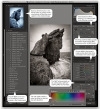
Figure 7.1 In this screen shot of the Develop module, I have highlighted the main black-and-white adjustment controls.
When you switch to B&W mode, you have full control over the individual sliders, and these can be adjusted any way you like to create custom black-and-white conversions. The great thing about the Lightroom B&W panel is how the tonal balance of the image automatically compensates for any adjustments you make. Even so, it may still be necessary to revisit the Basic panel and readjust the tone controls such as the Exposure, Brightness, and Contrast sliders after you have applied a B&W panel adjustment.
In addition to working with the B&W panel sliders, you can use the HSL desaturate technique I describe at the end of this chapter. This provides you with even more scope to produce varied black-and-white conversions.
The Split Toning panel can be used to add split tone color effects to black-and-white images and to produce different kinds of cross-processing effects with color originals. As always, favorite Develop settings can be saved as presets in the Presets panel, and a couple of black-and-white presets are there for you to play with. In Figure 7.1, I rolled the mouse cursor over the Creative – Selenium Tone preset, which updated the Navigator preview accordingly.
Black-and-white conversion options
In the early days of black-and-white photography, film emulsions were fairly limited in their color response. Most of these film emulsions were mainly sensitive to blue light only, which is why the skies in old photographs often appeared white, and why photographers could process their films in the darkroom using a red safe light. As film emulsion technology improved, panchromatic black-and-white films began to emerge, and film photographers were able to creatively exploit the improved color sensitivity of these modern film emulsions. This next section shows you how to continue that tradition when working with digital-capture images.
RGB color images, such as raw-processed digital captures, are made up of three grayscale images that record the luminance information of the original scene after it has passed through the red, green, and blue filters that overlay the photosites on the camera sensor. The color images you preview on the computer display are, therefore, composite images made up of these three RGB grayscale channels, which, when combined, produce a full-color image. Figure 7.2 shows the individual red, green, and blue grayscale channels that make up an RGB image; here already you can see three quite different black-and-white interpretations of the original color photo. The B&W controls in Lightroom allow you to blend the three grayscale channels in various ways to produce different black-and-white conversion outcomes such as the examples shown in Figure 7.3. You will notice that there are actually eight B&W panel sliders you can use when carrying out a black-and-white conversion: Red, Orange, Yellow, Green, Aqua, Blue, Purple, and Magenta. Adjusting these sliders allows you to lighten or darken these respective colors in the color original when calculating the conversion.
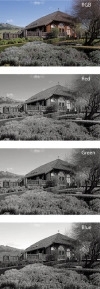
Figure 7.2 An RGB image consists of three grayscale channels that describe the red, green, and blue color information at the time of capture.
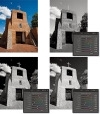
Figure 7.3 The B&W panel allows you to blend the color channel information in all sorts of ways to produce very different monochrome conversions from a color original.
How not to convert
Some photographers limit their black-and-white options unnecessarily, simply because they are unaware of the black-and-white conversion techniques that are available to them in Lightroom and Photoshop. For example, some people may set their cameras to shoot in a black-and-white JPEG mode. This restricts not only the tone adjustment options, but the black-and-white conversion options, too. The camera's onboard image processor decides, on the fly, how to blend the color channel information and produces a fixed black-and-white conversion. You are consequently left with no room to maneuver, because all the color data has been thrown away during the in-camera JPEG conversion process. Then there is the RGB to Lab mode method, in which you delete the a and b channels and convert the remaining, monochrome Lightness channel to grayscale or RGB mode. I suppose I'd better be careful of what I say about Lab mode editing because lately there has been a resurgence of interest in the Lab color space. Still, I don't believe there is anything to be gained from this approach because, yet again, you are throwing away all the color data rather than making use of it in the conversion.
Temperature slider conversions
Let's now look at how to use a black-and-white conversion in Lightroom to convert a color image (such as the one shown in Figure 7.4) to black and white. As just mentioned, one method is to click the B&W button in the Basic panel and adjust the White Balance settings. Figure 7.5 shows two possible black-and-white outcomes that can be achieved by dragging the Temp slider in the Basic panel and then clicking the Auto-Adjust button in the B&W section of the HSL / Color / B&W panel. The top version in Figure 7.5 shows a white balance with a warm bias. Notice how the red and yellow colors appear lighter when they are converted this way. When the Temp slider is dragged in the opposite direction, as shown in the bottom picture, the red and yellow colors look a lot darker. You can also adjust the Tint slider to vary the black-and-white conversion. A Tint slider adjustment wouldn't have much effect here in this particular photo, but there is an example coming up on page 419 where you'll see how a green Tint slider adjustment can be used to simulate an infrared look. In the next set of steps, we'll look at a further example of how to optimize a black-and-white conversion for a color portrait using just the White Balance and B&W sliders.

Figure 7.4 Here is a color original. Compare the monochrome conversions on the next page with the red, green, and blue colors in this photograph.
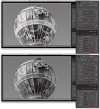
Figure 7.5 Here are two B&W mode versions of the color image shown in . If you adjust the White Balance settings and then click the Auto button in the B&W panel, the B&W sliders will adjust accordingly. The top version shows a warm white balance temperature conversion followed by an auto black-and-white adjustment, and the bottom version shows a cool white balance temperature conversion followed by an auto black-and-white adjustment. Note the different outcomes in these two auto conversions.
Auto B&W plus white balance adjustments
- Let's look further at how the Black & White White Balance and Temp slider controls can affect a conversion. Here is a color photograph of the model used on the cover, in which I deliberately applied a blue color white balance. This works well as a color image, but let's see how it looks when converted to black and white.
- I clicked on the Black & White button in the Basic panel (circled) and then clicked the Auto button (also circled) in the B&W panel to apply an auto adjustment that was based on the current White Balance, Temp, and Tint settings. As default conversions go, this wasn't a bad starting point to work from.
- I then adjusted the Temp slider to find an optimum setting that would yield the best skin tone contrast and, as I did so, I clicked the Auto button each time, to update the B&W settings. I found that when the white balance was pushed to extremes I also needed to adjust the Brightness slider in the Basic panel to compensate for the B&W auto adjustment.
- I also wanted to add some subtle color toning to the adjusted photo. So I used the Split Toning panel to add a warm highlight and a cool shadow split tone. (The Split Toning panel is covered later in this chapter.)
Manual B&W adjustments
Manually dragging the B&W panel sliders gives you almost unlimited freedom to create any number of different black-and-white adjustments. This is where the real fun begins, because you have complete control over how light or dark certain colors are rendered in the black-and-white conversion. The following steps show how I was able to improve upon the default Auto B&W panel setting, thereby maximizing the contrast in the sky and the clouds. Notice that I gave the Green, Aqua, and Blue sliders negative values because I wanted these colors to render darker. You can adjust the B&W sliders by dragging them, but you may well find it easier to use the Target Adjustment tool mentioned in Step 2 to edit the image directly. Remember, the black-and-white outcome is again influenced by the white balance setting, so it is often useful to experiment with different white balance adjustments as you search for the best combination, as shown here.
- In this first step, the colors and tones were optimized using the Basic panel controls. This screen shot shows the color original alongside a black-and-white version that was produced using the Auto B&W setting. The default black-and-white conversion was nowhere near as dramatic as I would have liked.
- This second version shows the same image after I made some custom edits using the B&W sliders. I clicked the Target Adjustment tool button (circled), moved the mouse over the rock, and dragged upward to lighten the selected colors. I then moved the mouse over the sky and dragged downward to darken and add more contrast to the clouds. Notice that I also adjusted the Temp slider to make the white balance setting cooler and adjusted the Tint slider to make the white balance more green. This in turn also made the black-and-white-adjusted version look even more contrasty.
B&W slider tip
If you want to create dramatic black-and-white conversions, move the sliders farther apart and try moving two or more sliders in unison. In the above example, I moved the Green, Aqua, and Blues sliders to the left. This created the most dramatic tonal contrast based in the opposing colors of the warm rocks against a cloudy blue sky. The following section shows how to push Lightroom black-and-white conversions to even greater extremes.
Black-and-white infrared effect
Now watch what happens when you take the White Balance settings to extremes before applying a black-and-white conversion. The following black-and-white infrared technique illustrates just one of the ways you can achieve a creative black-and-white conversion using Lightroom.
- Here is the before version, which shows a nice mix of foliage—ideal for demonstrating a black-and-white infrared effect.
- To create the fake black-and-white infrared look, I started with the image in Color mode, made the white balance temperature slightly cooler, and applied a full negative tint adjustment to the white balance to make all the green colors (i.e., the leaf foliage) as bright green as possible, without actually clipping any important areas of detail.
- I then clicked the B&W button in the HSL / Color / B&W panel to convert the photograph to black and white. To get the full infrared look you see here, I set the Yellow and Green sliders in the B&W panel to +100% and the Aqua slider to +50%. I also adjusted some of the Basic panel settings. In particular, I set the Recovery slider to +100%, which helped me preserve some of the delicate tone information in the leaves. I set the Clarity slider to -80%, because this created a diffused printing effect that added a nice, soft glow to the photograph.
- Finally, I went to the Split Toning panel to add a split tone coloring effect, and also added a Grain effect via the Effects panel. The settings shown here worked well for this particular image. If I wanted to apply this infrared effect to other photographs, I would need to save these settings as a custom preset. The main thing to remember is to lighten the greens by applying an extreme Tint slider adjustment in combination with the B&W panel settings shown here, apply a negative Clarity adjustment, and add a grain effect. The other tone settings will need to be fine-tuned on an image-by-image basis.
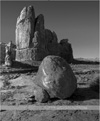

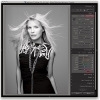




 (Mac) or
(Mac) or  (PC) to enable the Target Adjustment tool in the B&W panel and use
(PC) to enable the Target Adjustment tool in the B&W panel and use  (Mac) or
(Mac) or  (PC) or
(PC) or  to turn it off again.
to turn it off again.


